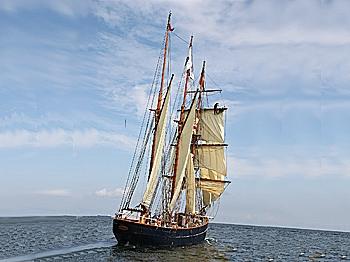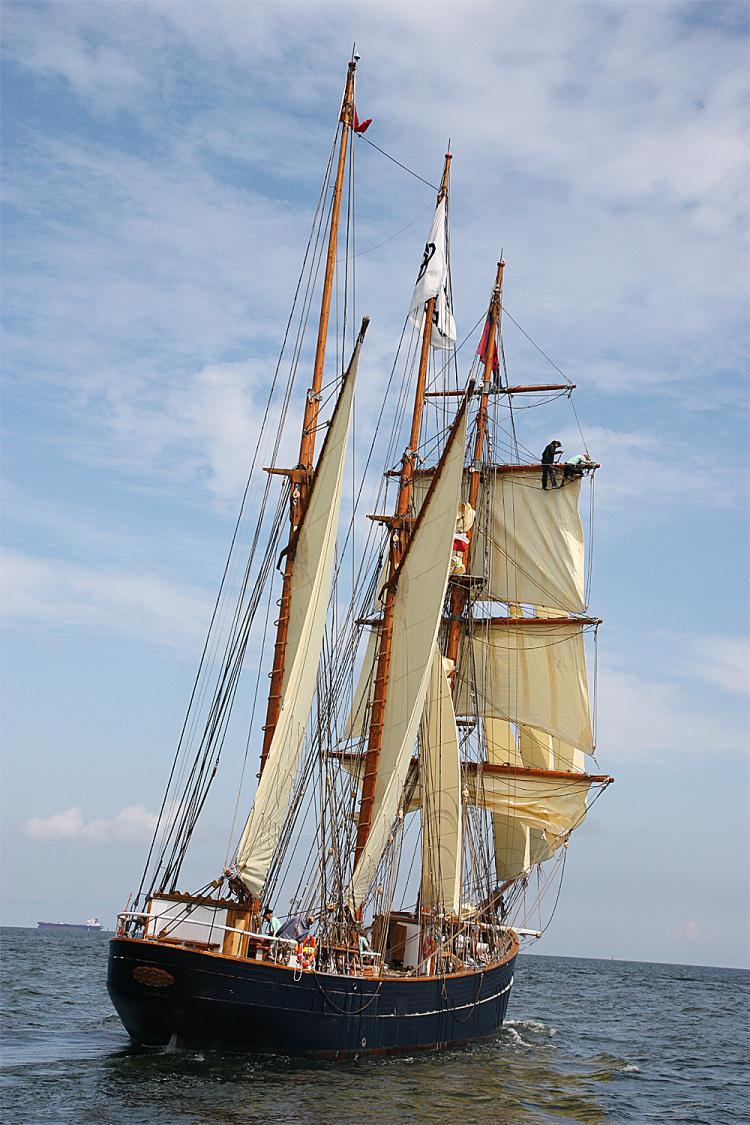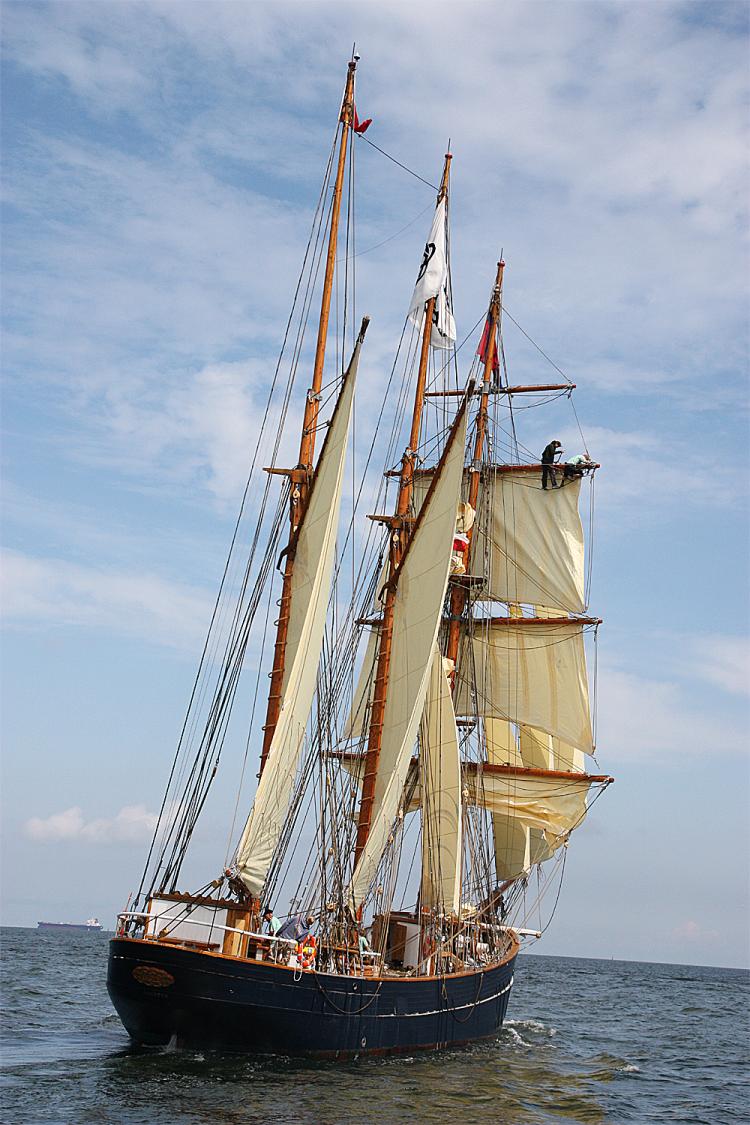On July 2-4, in Gdynia, Poland, over 100 vessels from all over the world were getting ready to start the first stage of the regatta. Among the 100 ships, 22 are class A—the most beautiful, biggest frigates of the world. These include the Dutch “Georg Stage,” the smallest frigate in the world, and the Russian “Siedov,” the largest in the world. Gdynia also has its honorary guest, its own “Dar Pomoza,” celebrating its 100th year, now serving in retirement as a sea museum.
In the past, the beauty of these ships was compared only to horses galloping, or to the grace of women dancing. Why are so many people nowadays still in love not only with the beauty, but also the lifestyle?
On board the German “Roald Amundesen,” Paul Rutdolph is an engineer looking for adventure, and it is the history that drew him. A student of archeology, Simone Hoferolet is now training as a crew member. She says she loves the smell of the old wooden ship—the smell of tar that is used to preserve the wood and ropes.
“I get very sea sick for days, it is crowded and uncomfortable, yet once I stepped on board I fell in love—that was 2005.”
Hoferolet took part in a voyage that caught them in a heavy storm during when they lost most of their sails, and the boat was sailing at a 60-degree angle. “Strangely I never felt scared, we were all okay,” she said.
The third officer on board the “Lord Nelson,” Marcin Dobrowalski, said that, “Sailing on a tall ship is the means to achieve a goal, not the goal itself. It teaches to work in a group, get confidence in oneself regardless of age. It is good for everyone and one can start at any age.” The age of crew members ranges from 16 to 80 years.
The ships give people strength and inspiration in life, the freedom to become what they need to be. The beauty comes with hard work around the clock. Life on board is divided into watches, as in groups of people that eat, sleep, and work on the same schedule for the duration of the race.
On the Polish three-mast schooner that trains Polish sea scouts (the one that yours truly trained on) the entire crew is divided into four groups—watches with an officer in charge of each. Then schedules are rotated: one watch takes kitchen duties for 24 hours, while the other three rotate in 4-hour shifts to work on deck, either navigating, cleaning, maintaining and are at the skipper’s beck and call.
The beauty of learning the old style of life is often overpowered by miserable weather conditions, seasickness, and a lack of sleep. The crew then learns firsthand the secret shanties and the “lyrics” of a miserable life under a harsh skipper, the songs becoming the only way to freely express true feelings. Songs are sung to help rhythmically pull up sails, clean, or pump out old water. They also help at maneuvers, especially at the beginning of the race. They tend to be frequent until the entire crew has perfected it and can be depended on during a real need to maneuver all 22,600 square feet of sails.
Next time you see tall ships, keep in mind that people sailing on them differ from people on yachts. One person said that the difference is similar to that between old sports cars and sedans. They all drive on roads, however the people driving them differ as much as the vehicles themselves.
So while we get a glimpse into the beauty of life in the past, do keep in mind that people embarking on this trip are transported in time since the sea has not changed its rules that people have had to abide by the centuries.
When you are hundreds of feet up in the air standing only on a single piece of rope looking down to the deck that seems so small that the heart wants to stop, you start to wonder: “Why did I decide to do this?”
Simone said, “The first time I climbed up, it was already getting dark, I had my heart in my throat as sometimes stepping to the side I missed the rope and found nothing under my feet. It was totally dark when I was climbing down.”
That feeling changes into the incredible strength of overcoming oneself. As the 23-year-old Captain Marta Szylajska-Obieglo said in reply to a reporter’s question of how she tamed the wild realm as she was sailing around the world alone: “If you think you can tame nature you will fail—you can learn to use it and work with it humbly.”





Friends Read Free